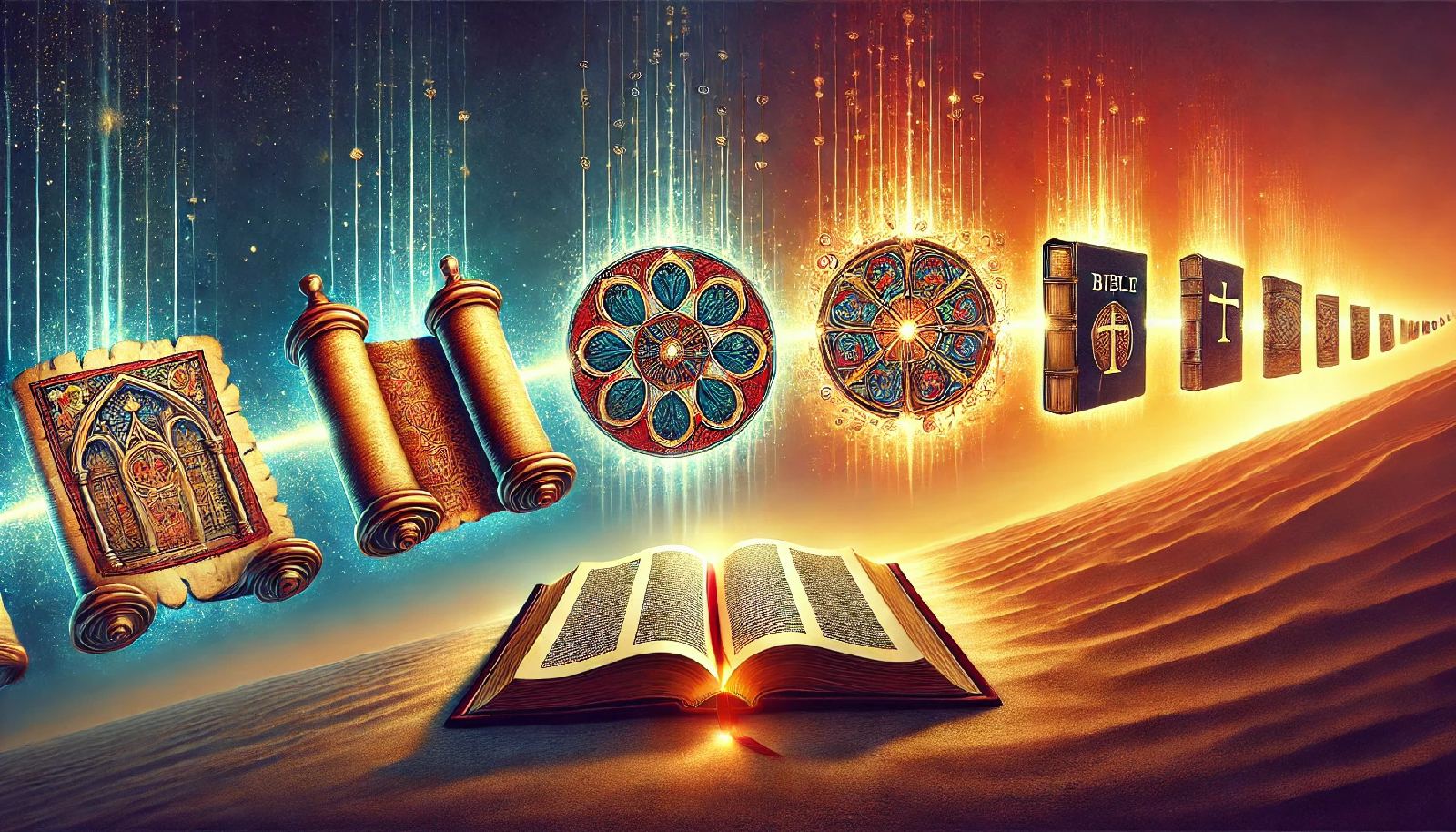Hello there, dreamers and deep thinkers,
The Bible, often referred to as the “Good Book,” has shaped human history, culture, and spirituality for millennia. It’s not just a book—it’s a library, a narrative, a spiritual compass, and a historical artifact. Whether you view it as divine scripture, a literary masterpiece, or an ancient collection of stories, its history is a fascinating tale worth exploring. So, let’s dive into how the Bible came to be and why it holds such a central place in the human story.
The Origins: Oral Traditions and Early Writings
The Bible didn’t start as a single book but as a collection of oral traditions. Long before writing existed, communities shared their beliefs, laws, and histories through storytelling. These oral traditions laid the foundation for what would later become the Bible.
The oldest parts of the Bible, like the Torah or Pentateuch (the first five books of the Old Testament), are believed to have been written around the 13th or 12th century BCE. These texts, attributed to Moses, include stories of creation, the Exodus, and the laws given to the Israelites. However, scholars suggest these writings were likely compiled from multiple sources, including older Mesopotamian and Canaanite myths.
The Old Testament: A Patchwork of Cultures and Influences
The Old Testament, or Hebrew Bible, was written over a span of about a thousand years. It reflects a complex tapestry of cultural, religious, and political influences. From the poetic Psalms and the wisdom of Proverbs to the prophetic warnings of Isaiah and Jeremiah, these books capture the hopes, struggles, and faith of the ancient Israelites.
The Babylonian Exile (6th century BCE) was a pivotal moment in the formation of the Old Testament. During this period, many of the stories and laws were written down to preserve the Jewish identity in the face of displacement and foreign domination. The influence of neighboring cultures, like the Babylonians and Persians, is evident in the Bible’s themes and literary style.
The New Testament: The Birth of Christianity
Fast forward to the 1st century CE, and we encounter the New Testament, which documents the life, teachings, death, and resurrection of Jesus Christ and the early Christian church. The New Testament was written in Greek, the lingua franca of the Roman Empire, which helped spread its message far and wide.
The four Gospels—Matthew, Mark, Luke, and John—offer different perspectives on Jesus’ life and teachings. They were written between 40 and 100 years after Jesus’ death, based on both oral tradition and earlier written sources. The epistles of Paul, written even earlier than the Gospels, played a significant role in shaping Christian theology.
By the 4th century CE, Christianity had grown from a persecuted sect to the dominant religion of the Roman Empire. This was when the canon of the New Testament was formalized, with church councils determining which books were “inspired” and should be included.
The Bible in Translation: From Scrolls to Mass Printing
The Bible’s history is also a story of translation and dissemination. Originally written in Hebrew, Aramaic, and Greek, the Bible underwent several translations to reach new audiences. The Septuagint, a Greek translation of the Hebrew scriptures, was pivotal for early Christians.
By the Middle Ages, Latin became the language of the Bible in the West, thanks to St. Jerome’s Vulgate translation. However, Latin was inaccessible to most laypeople, leading to the demand for translations in vernacular languages.
The invention of the printing press in the 15th century revolutionized Bible production. The Gutenberg Bible, printed in 1455, was the first major book produced using movable type. This not only democratized access to scripture but also set the stage for the Protestant Reformation, as reformers like Martin Luther championed translations that everyday people could read.
Controversies and Councils: What Made the Cut?
The process of canonization—deciding which books to include in the Bible—was far from straightforward. Different branches of Christianity recognize different canons. For example, Catholic and Orthodox Bibles include books like Tobit and Judith, known as the Deuterocanonical books, which are absent from most Protestant Bibles.
The debates over what constituted “scripture” were often heated and reflected theological and political tensions of their time. The Council of Nicaea (325 CE) and later councils played key roles in standardizing Christian doctrine, although debates about the Bible’s contents continued for centuries.
The Bible Today: A Living Document
Today, the Bible exists in thousands of languages and countless editions. It is the best-selling book of all time, with billions of copies distributed worldwide. Modern translations aim to make the text accessible while staying true to the original languages and contexts.
The Bible also continues to inspire debate, interpretation, and scholarship. Archaeological discoveries, such as the Dead Sea Scrolls, have shed light on its historical context and the development of its texts. Meanwhile, different religious and cultural groups interpret the Bible in diverse ways, ensuring its relevance in a rapidly changing world.
Why the Bible Matters
Whether you see the Bible as sacred scripture, a historical document, or a work of literature, it’s impossible to ignore its impact. It has influenced art, music, literature, and law. It has inspired movements for social justice and been used to justify both peace and conflict.
At its core, the Bible is a record of humanity’s search for meaning, connection, and transcendence. Its enduring power lies not just in its words but in the way it invites readers to wrestle with life’s biggest questions: Who are we? Why are we here? What does it mean to live a good life?
The Bible’s history is, in many ways, our history—a mirror reflecting the evolution of human thought, belief, and aspiration.
So, whether you read it for faith, inspiration, or curiosity, the Bible offers a journey that connects us to the past, challenges us in the present, and invites us to imagine a future rooted in hope and understanding.
Stay curious friends,
April
Cognitive Psycho




